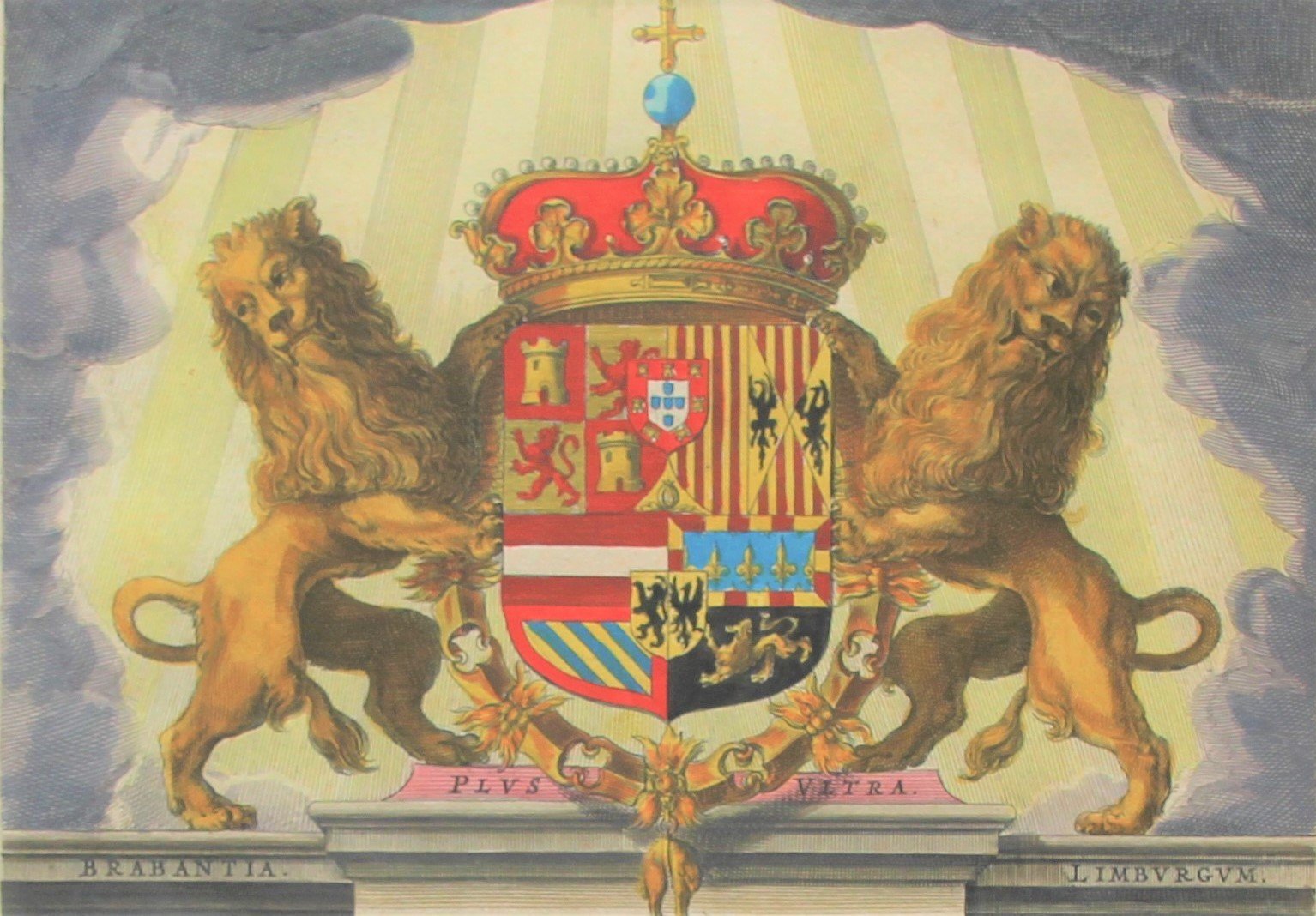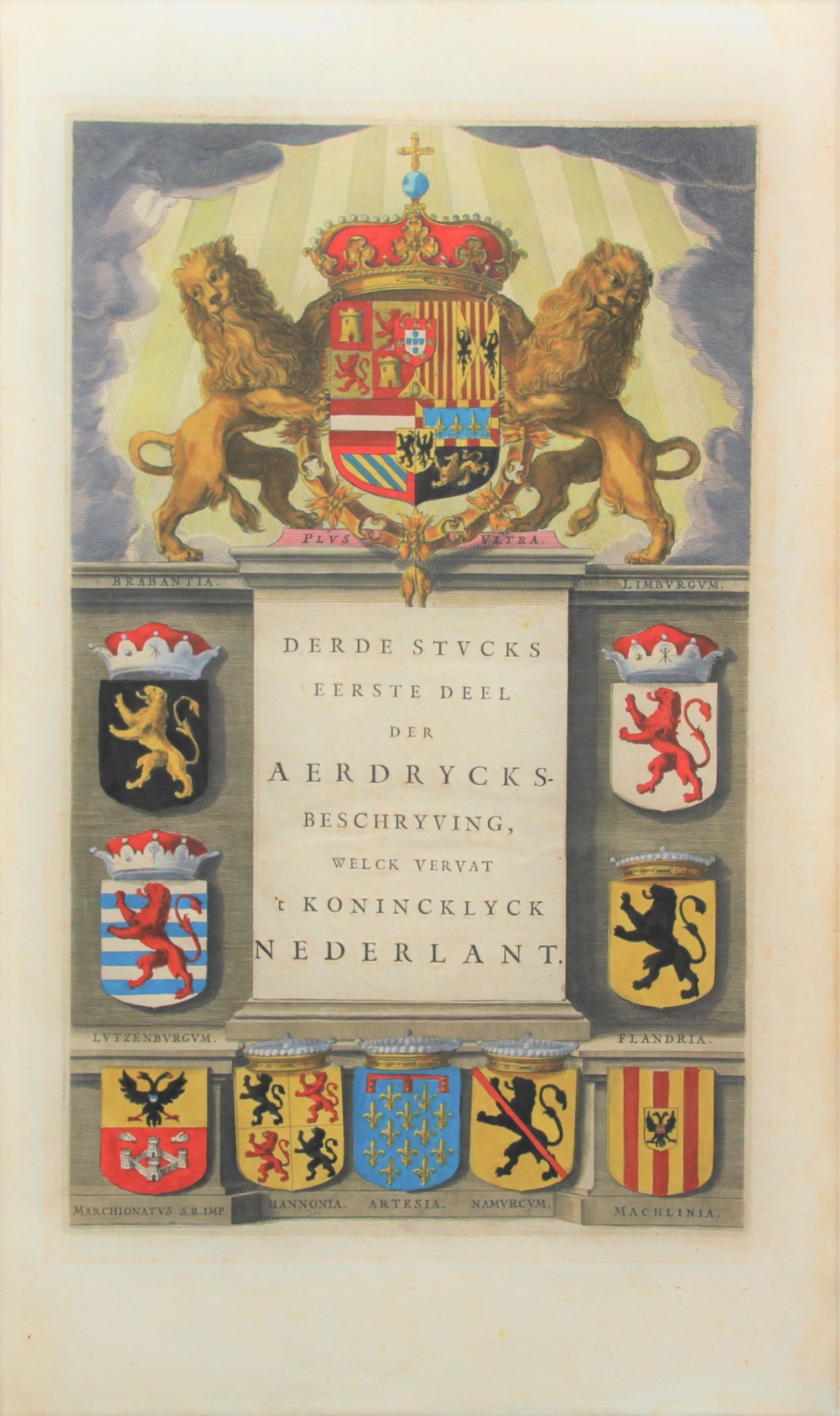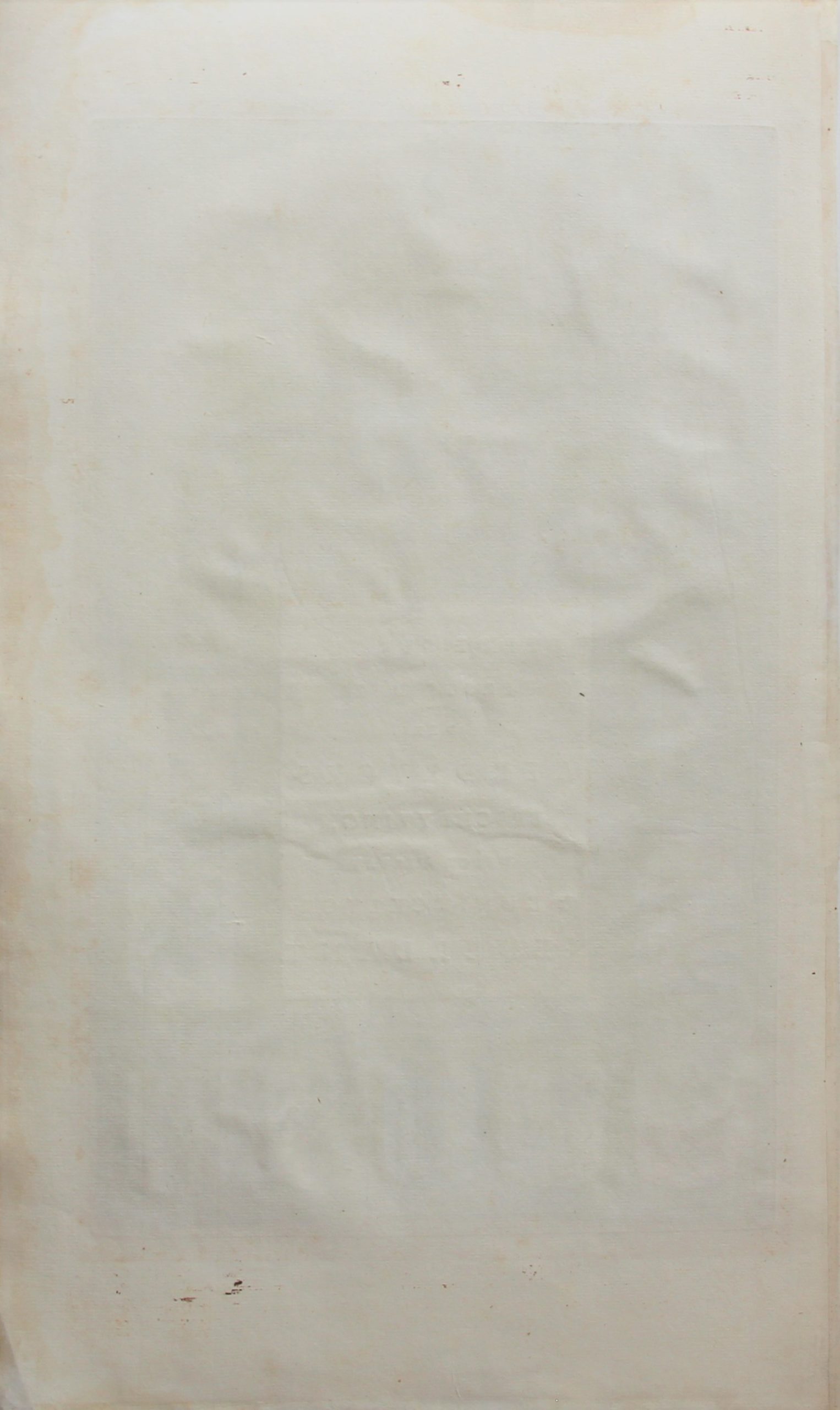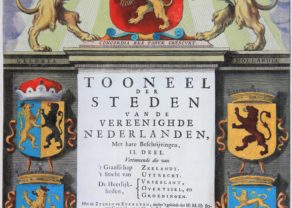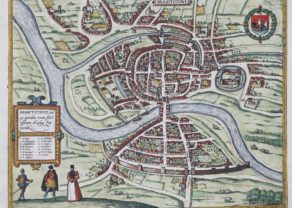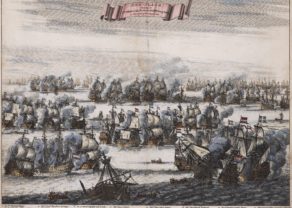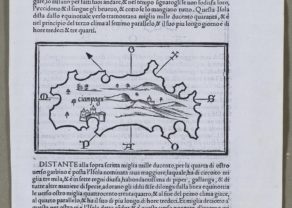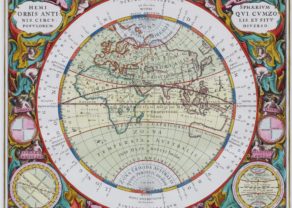Title page of Derde Stuck Eerste Deel der Aerdrycks-Beschryving, welck vervat ‘t Koninclyck Nederlant
Detail
Date of first edition: 1649
Date of this map: 1664
Dimensions (without margins): 40,7 x 24,7 cm
Dimensions (including margins): 53,2 x 32 cm
Condition: Very nice engraving on strong paper. Nice colouring, wide margins.
Condition rating: A
Verso: blank
From: Originally from Tonneel der Steden van de Vereenighde Nederlanden, Met hare Beschrijvingen, Deel II, Amsterdam, J. Blaeu. 1649. Koeman BI68A
Here from the volume of the Atlas Maior on The Netherlands: “Derde Stuck Eerste Deel der Aerdrycks-Beschryving, welck vervat ‘t Koninclyck Nederlant”
Reference: Shirley; R., Courtiers and Cannibals, Angels and Amazons. The art of decorative cartographic titlepage, Hes & de Graaf Publishers, 2009
In stock
Tonneel der Steden van de Vereenighde Nederlanden by Blaeu
In front of the title page, a fronticpiece was regularly depicted, allegorically indicating which region of the world was included in that volume. This frontispiece was originally the introduction to the Town Atlas of the Netherlands, part II by Joan Blaeu from 1649. The frontispieces are used in many atlases with multiple language versions: that is why the text vignette is glued in the middle to the print.
This identical copy is from the Dutch version of the Atlas Maior of J. Blaeu’s “Grooten Atlas, oft Werelt-Beschryving, in welcke ‘t Aerdryck, de Zee, en Hemel, wort exhibits and described” from 1664 and bears the title: Derde Stucks Eerste Deel der Aerdrycks-Beschryving, welck contains’ t Konincklyck Nederlant.
At the top sits the imposing Spanish Coat of Arms with a hanging Golden Fleece against the background of the sun’s rays. Nine coats of arms of the Southern Netherlands are shown: Brabant, Luxembourg, Antwerp, Hainaut, Artois, Namur, Mechelen, Flanders and Limburg. The coats of arms of the duchies of Brabant, Limburg and Luxembourg show their crown, which differs from the crown of a count.
The exact number of the provinces as such recognized could differ in time: not listed are the Kasselrijen of Lille, Douai and Orchies (sometimes called Lille Flanders ) and Tournai.

